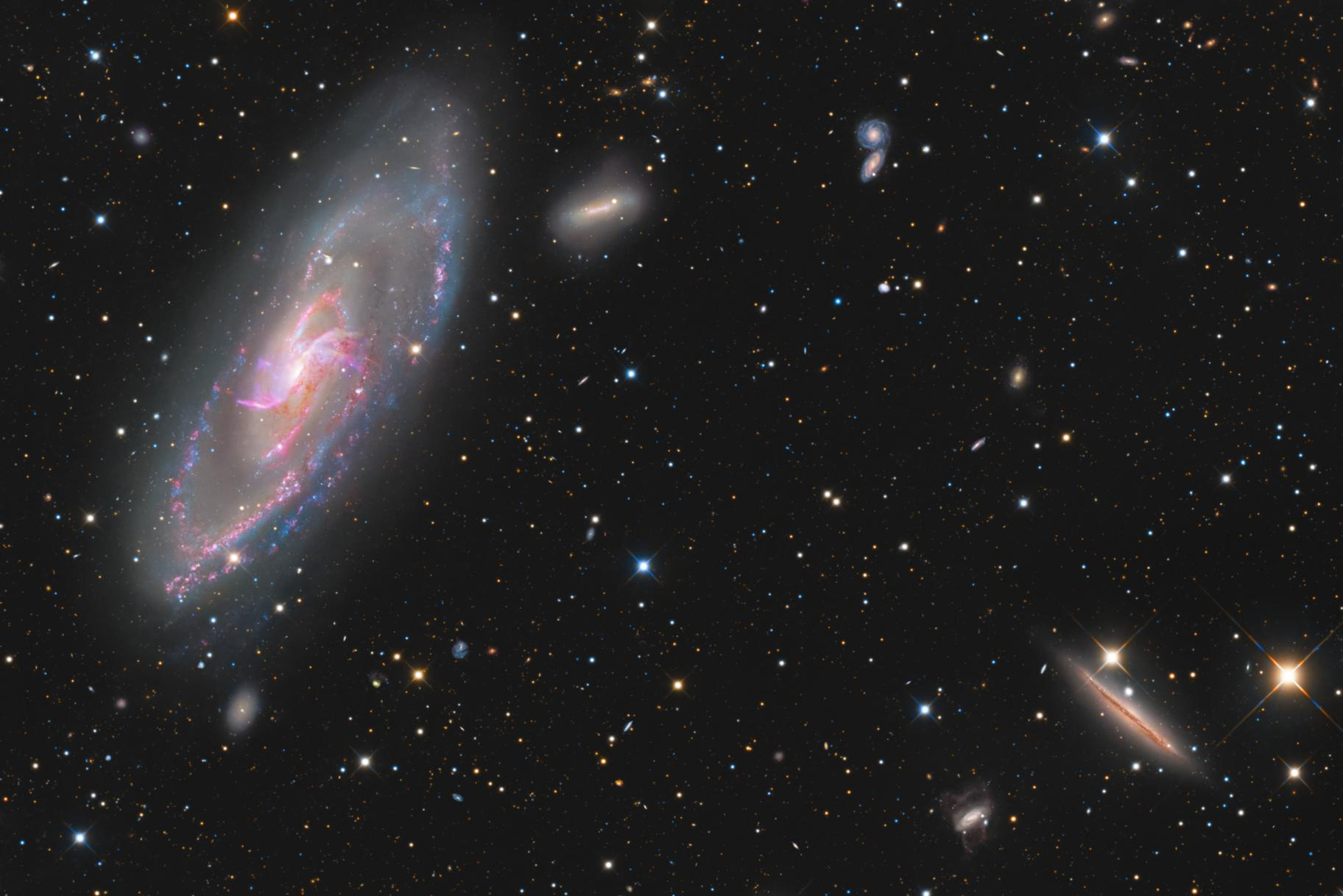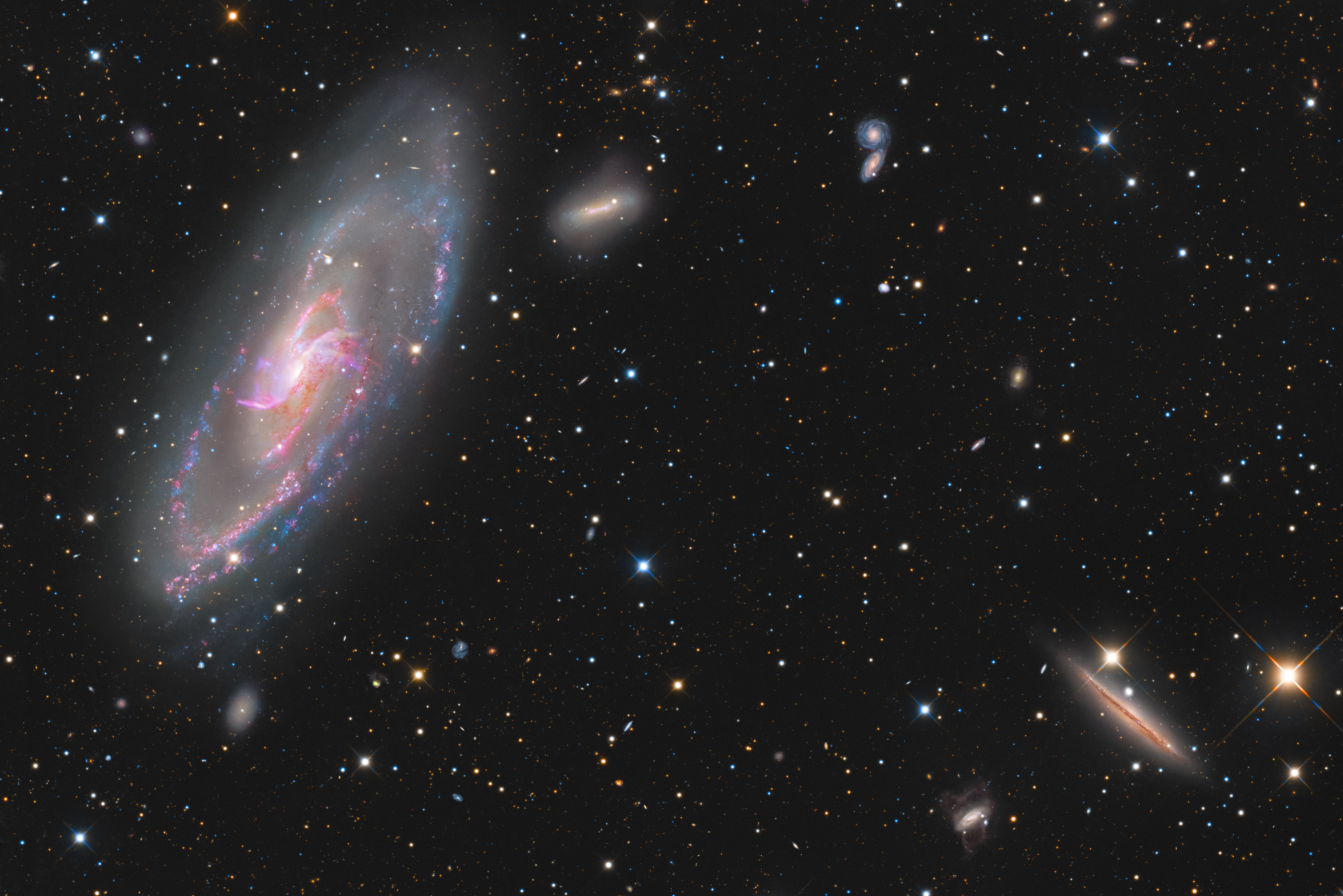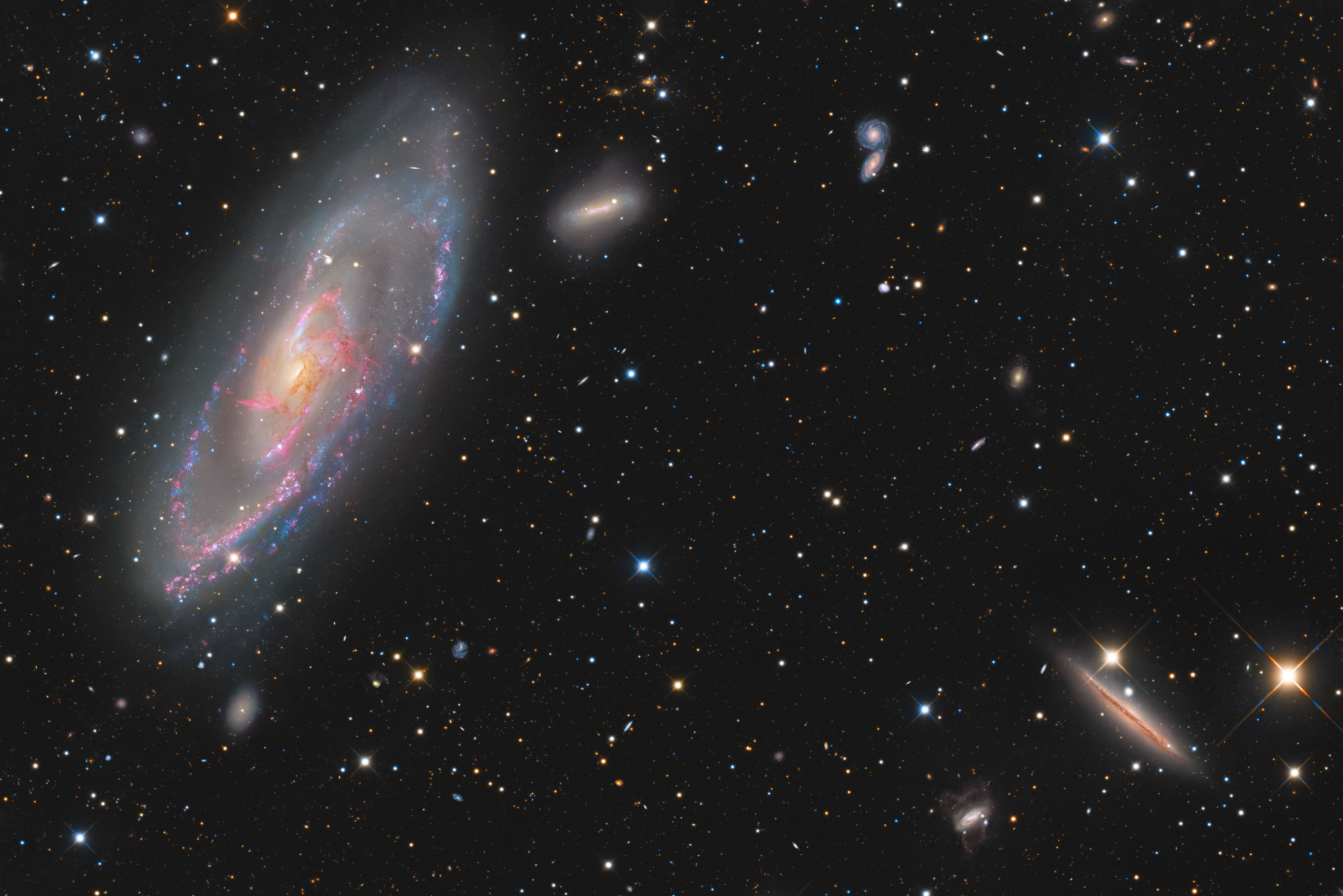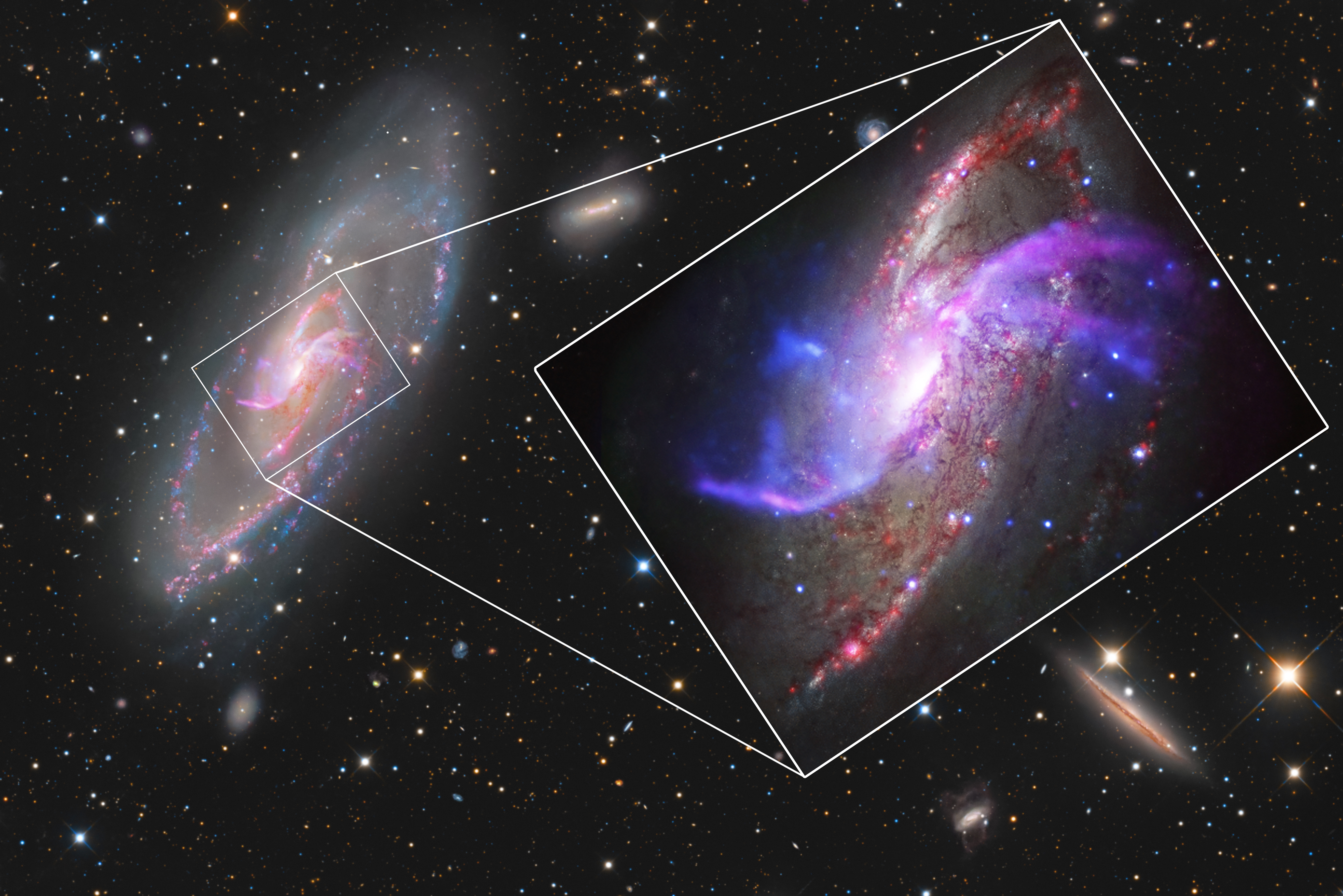Chandra Teams Up Again With Astrophotographers
Messier 106 (M106), also known as NGC 4258, is a spiral galaxy – like our own Milky Way -- located in the constellation Canes Venatici. It lies at a distance of roughly 23 million light-years and spans some 135,000 light-years in diameter.
This galaxy is famous, however, for something that our Galaxy doesn’t have – two extra spiral arms that glow in X-ray, optical, and radio light. These features, called anomalous arms, are not aligned with the plane of the galaxy, but instead intersect with it. The X-ray image from Chandra reveals huge bubbles of hot gas above and below the plane of the galaxy. These bubbles indicate that much of the gas that was originally in the disk of the galaxy has been heated to millions of degrees and ejected into the outer regions by the jets from a supermassive black hole at the galaxy’s core.

Credit: Optical: Deep Sky Collective; Chandra X-ray (purple): NASA/CXC/SAO; VLA Radio (yellow): NSF/NRAO/VLA; Spitzer IR (Red): NASA/JPL-Caltech
It's not only space-based X-ray telescopes like Chandra, however, that have looked at M106. Excellent work has been done from the ground including by amateur astrophotographers including a group called the Deep Sky Collective (DSC). The DSC, founded by Tim Schaeffer in 2023, aims to use the group’s telescopes in a concerted way to explore some of the faintest and most difficult target in the sky in great detail.
This new image of M106 shows the result of the DSC adding data from a space telescope like Chandra. The DSC image contains specific wavebands of light that primarily show emission from hydrogen and oxygen atoms. These data were gathered by DSC members over a few months, beginning in February 2024, followed by two months of processing the data. They had a total of 18 people working on these observations of M106.


The DSC data are shown in this new image separately (left), and composited (right) with the Chandra, VLA and Spitzer data. Credit: Left: ©Deep Sky Collective / Right: ©Optical: Deep Sky Collective; Chandra X-ray (purple): NASA/CXC/SAO; VLA Radio (yellow): NSF/NRAO/VLA; Spitzer IR (Red): NASA/JPL-Caltech
Once these ground-based data were collected, it was time to merge them with the publicly available X-ray data from Chandra, along with infrared data from NASA’s Spitzer Space Telescope and radio data from the NSF’s Very Large Array (VLA). The final result is spectacular. The DSC data are shown in this new image separately (above left), and composited (above right) with the Chandra data mapped in purple, VLA radio data mapped to yellow and Spitzer infrared mapped to red.

Pullout from the DSC Optical image composited with Chandra, Spitzer, VLA, to a closeup of the X-ray/Optical/Infrared/Radio. Credit Left: ©Deep Sky Collective / Inset: X-ray: NASA/CXC/Caltech/P.Ogle et al; Optical: NASA/STScI & R.Gendler; IR: NASA/JPL-Caltech; Radio: NSF/NRAO/VLA
This M106 image is yet another example of how by working collaboratively, we can expand our views, understanding and appreciation of the Universe.
- Log in to post comments
